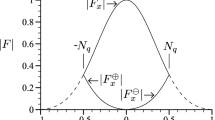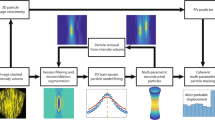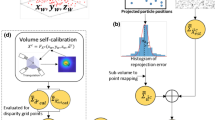Abstract
An adaptive, second-order accurate particle image velocimetry (PIV) technique is presented. The technique uses two singly exposed images that are interrogated using a modified cross-correlation algorithm. Consequently, any of the equipment commonly available for conventional PIV (such as dual head Nd: YAG lasers, interline transfer CCD cameras, etc.) can be used with this more accurate algorithm. At the heart of the algorithm is a central difference approximation to the flow velocity (accurate to order Δt 2) versus the forward difference approximation (accurate to order Δt) common in PIV. An adaptive interrogation region-shifting algorithm is used to implement the central difference approximation. Adaptive shifting algorithms have been gaining popularity in recent years because they allow the spatial resolution of the PIV technique to be maximized. Adaptive shifting algorithms also have the virtue of helping to eliminate velocity bias errors. The second- order accuracy resulting from the central difference approximation can be obtained with relatively little additional computational effort compared to that required for a standard first-order accurate forward difference approximation.
The adaptive central difference interrogation (CDI) algorithm has two main advantages over adaptive forward difference interrogation (FDI) algorithms: it is more accurate, especially at large time delays between camera exposures; and it provides a temporally symmetric view of the flow. By comparing measurements of flow around a single red blood cell made using both algorithms, the CDI technique is shown to perform better than conventional FDI-PIV interrogation algorithms near flow boundaries. Cylindrical Taylor–Couette flow images, both experimental and simulated, are used to demonstrate that the CDI algorithm is significantly more accurate than conventional PIV algorithms, especially as the time delay between exposures is increased. The results of the interrogations are shown to agree quite well with analytical predictions and confirm that the CDI algorithm is indeed second-order accurate while the conventional FDI algorithm is only first-order accurate.
Similar content being viewed by others
Author information
Authors and Affiliations
Additional information
Received: 15 June 2000/Accepted: 2 February 2001
Rights and permissions
About this article
Cite this article
Wereley, S., Meinhart, C. Second-order accurate particle image velocimetry. Experiments in Fluids 31, 258–268 (2001). https://doi.org/10.1007/s003480100281
Issue Date:
DOI: https://doi.org/10.1007/s003480100281




